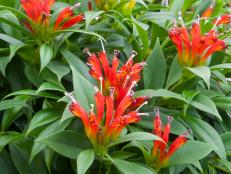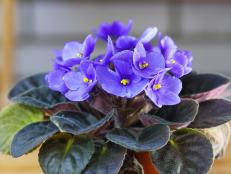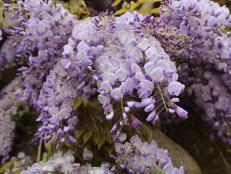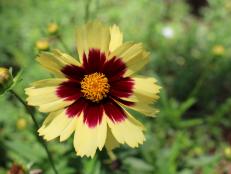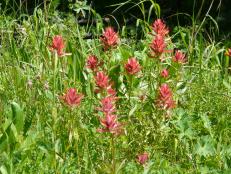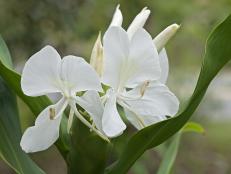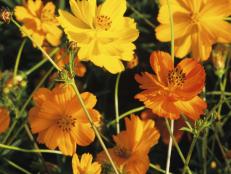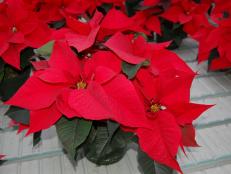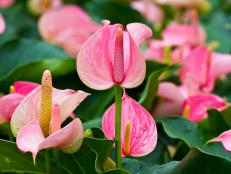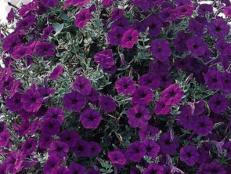Mona Lavender
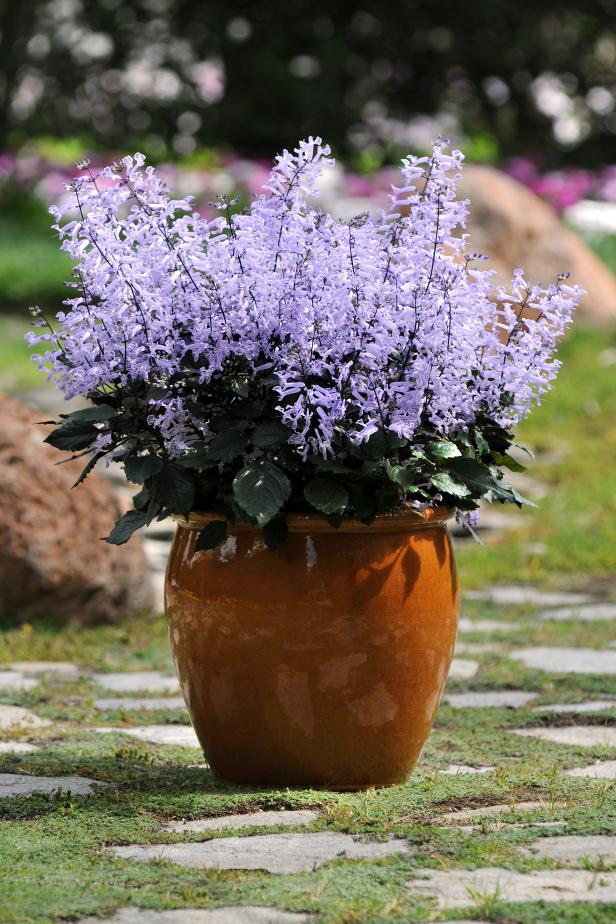
Image courtesy of Ball Horticultural Company
Love purple? Then ‘Mona Lavender’ plectranthus is the houseplant for you. This tropical beauty is a tough little plant. With cousins like mint, Swedish ivy and creeping Charlie (of lawn weed fame), it’s easy to guess that ‘Mona Lavender’ is a cinch to grow. This purple plectranthus thrives with minimal care. If you typically kill houseplants, take a gamble on Plectranthus ‘Mona Lavender’.
Plectranthus ‘Mona Lavender’ is a member of a large group that includes plants from Asia, Africa and Australia. The pretty ‘Mona Lavender’ is a type of spurflower and hails from South Africa, where it was developed at the Kirstenbosch Botanical Garden in Cape Town. ‘Mona Lavender’ plectranthus is a hybrid created by crossing stoep spurflower (Plectranthus saccatus), which has very large lavender blooms, with candle plant (Plectranthus hilliardiae), which has green leaves with purple backs.
‘Mona Lavender’ expresses the parental traits of colorful leaves and large lavender blossoms. It’s attractive year-round, in flower or out. This beauty is also versatile, thriving indoors as an easy-care houseplant or outdoors as a no-fuss shrubby perennial. Raised indoors or out, the secret to outstanding leaf color is light. The brighter the light, the more intense the leaf coloring becomes, both the green above and the purple beneath.
Indoors, give ‘Mona Lavender’ plectranthus a spot near a bright east or south window. When temperatures rise above freezing in late spring, shift plants outside for the summer. A spot that receives bright, indirect light works well, as does an area that receives morning sun. Outdoors, tuck this pretty purple plectranthus into a spot with part sun to light shade. In southern and western regions with mild winters, protect ‘Mona Lavender’ from hot afternoon sun.
Plectranthus ‘Mona Lavender’ is winter hardy in Zones 9b to 10 and withstands light frosts (temperatures down to 25 to 30 degrees F). In the landscape, expect ‘Mona Lavender’ to grow to 12 to 24 inches tall and wide. In planting beds, tuck plants into well-drained soil amended with organic matter. In containers, use a soilless mix designed for use in pots.
Pinch young plants regularly to encourage branching and fuller, bushier plants. Feel free to snip long-growing stems, especially in northern regions in winter, when growth might become lanky. These cuttings root easily in water and can be tucked into pots to start new plants.
‘Mona Lavender’ is a short day plant, which means that as days become shorter, the plants shift into flowering mode. Striking lavender blooms open on a spike that stands above leaves. In mild winter regions, plants can flower steadily from fall through spring. Flowering tends to taper off as temperatures soar and days lengthen. In northern regions, the flower show kicks off as warm summer days shorten into cool fall nights. Flowers may continue to appear through winter.
The name plectranthus comes from the Greek words “plectron,” which means spur, and “anthos,” which means flower. The flowers of a plectranthus typically have a spur at the base, and ‘Mona Lavender’ is no exception.







